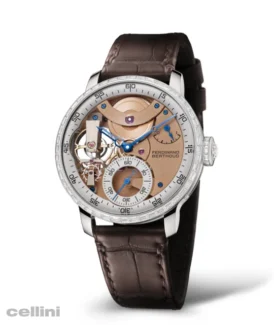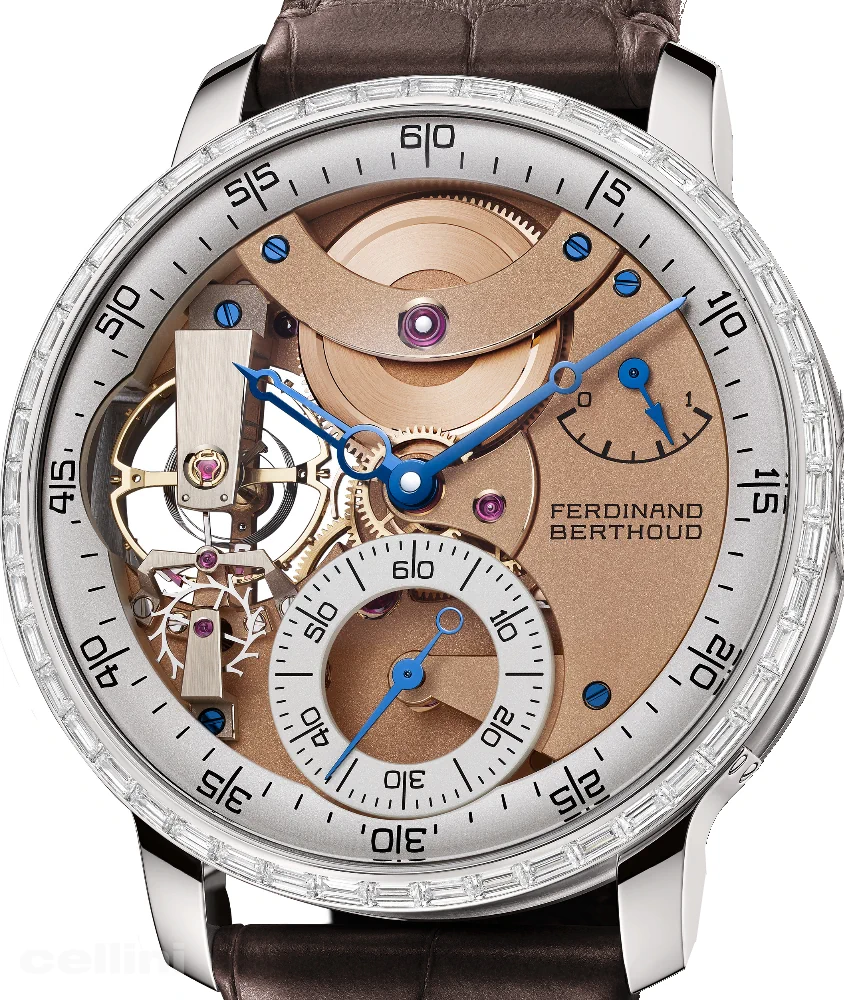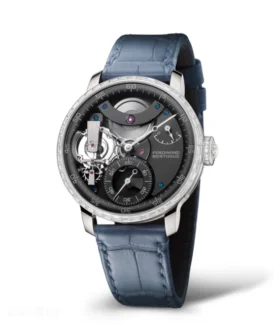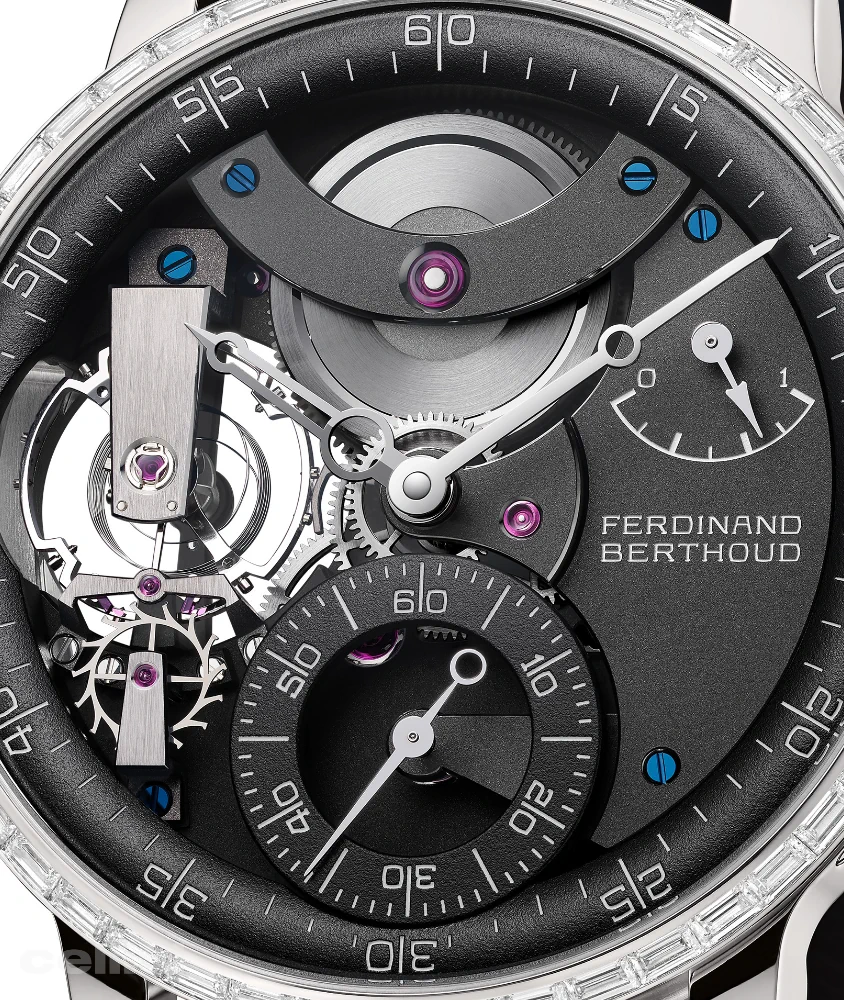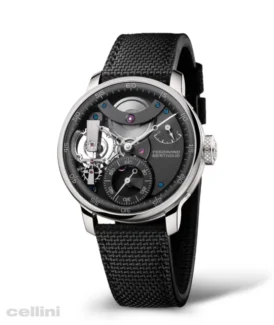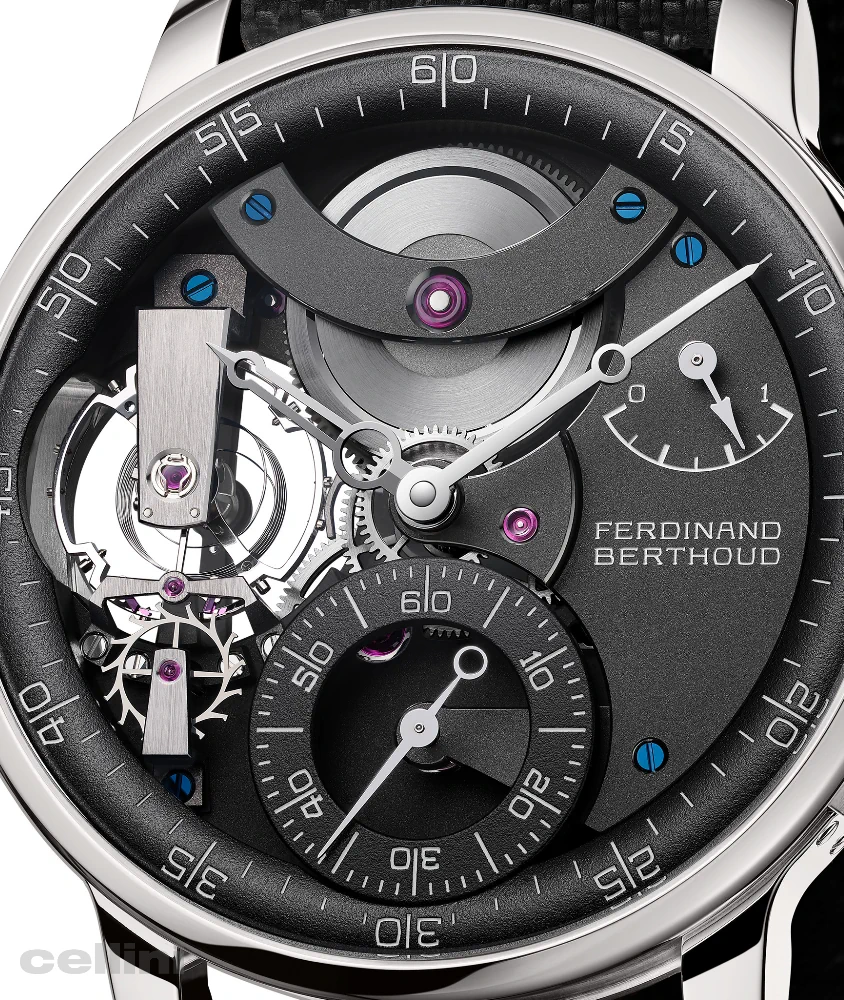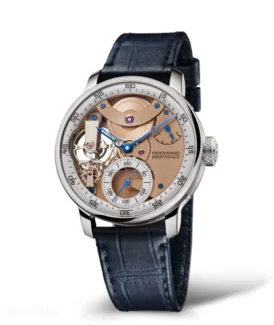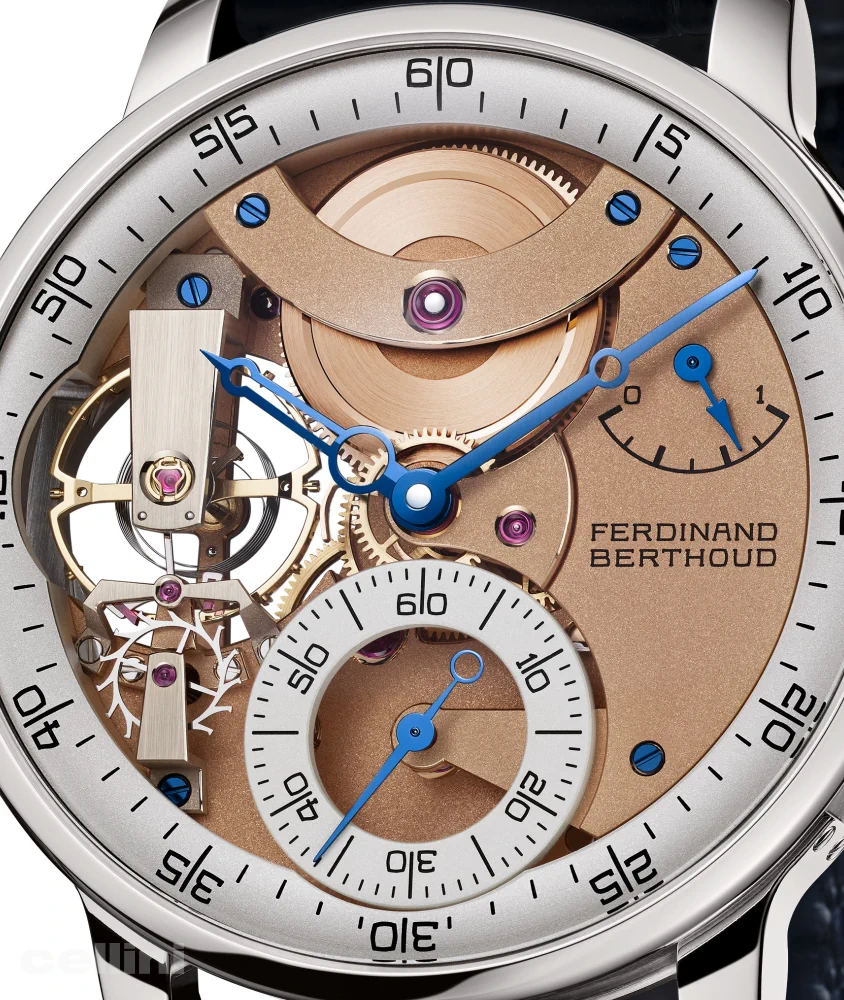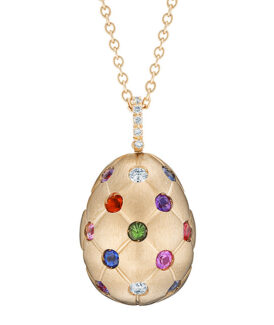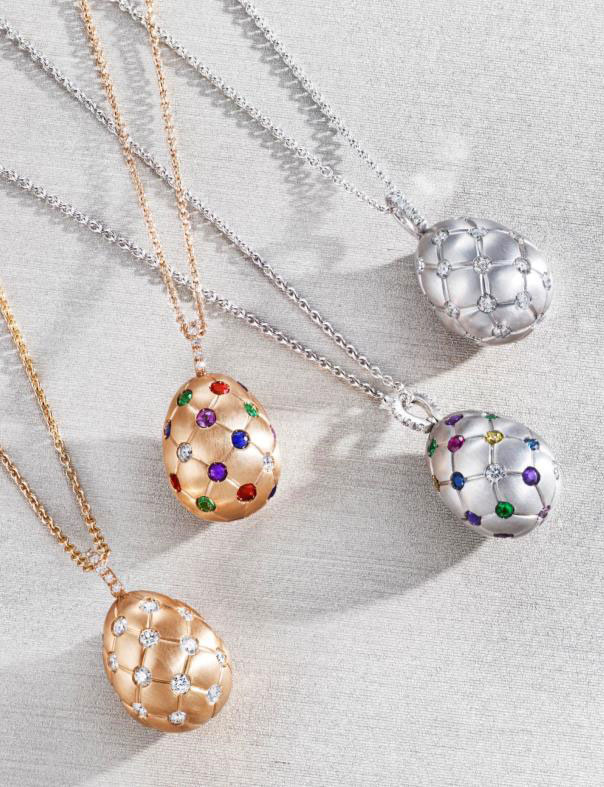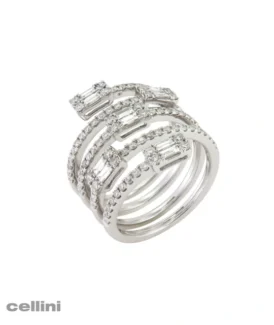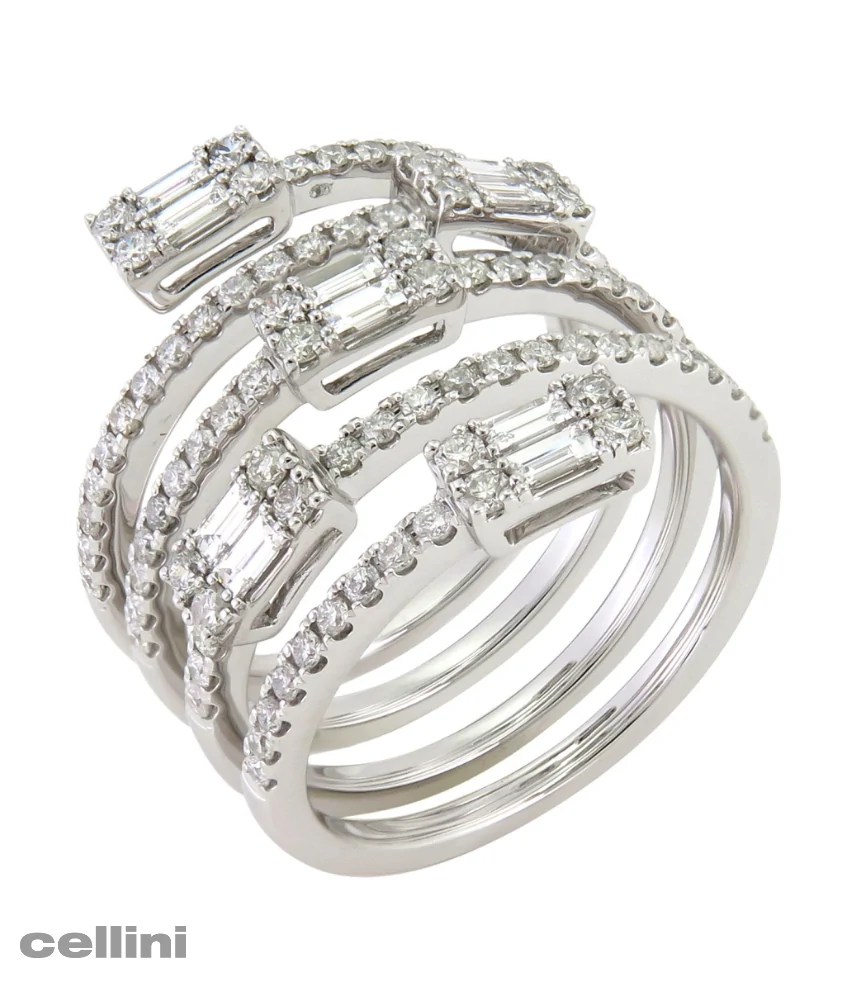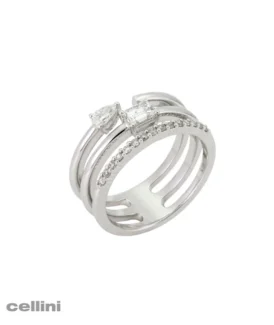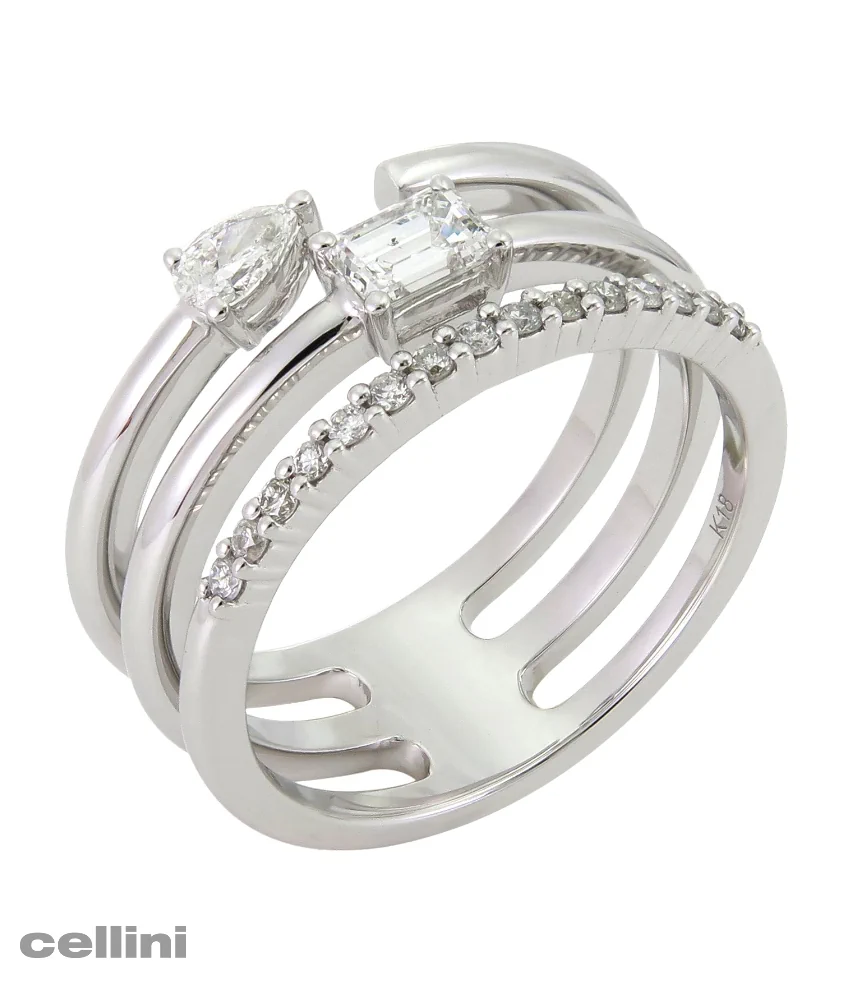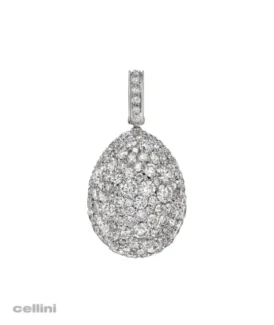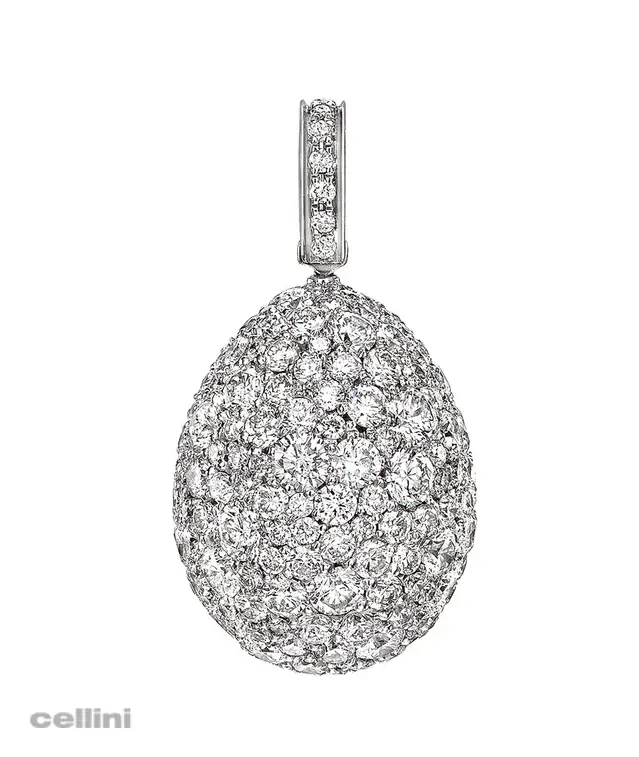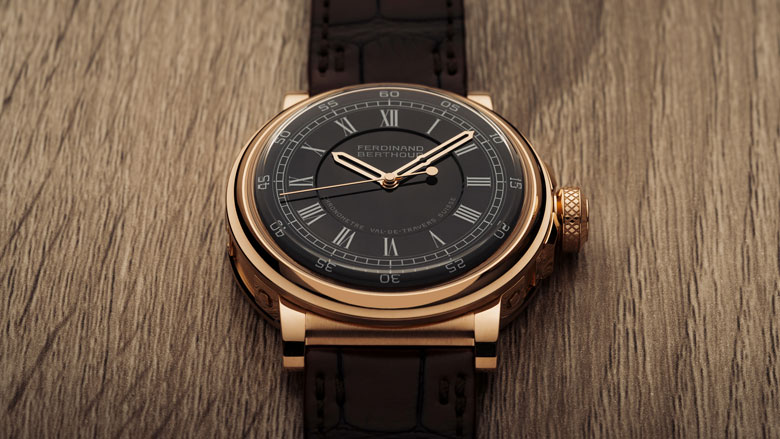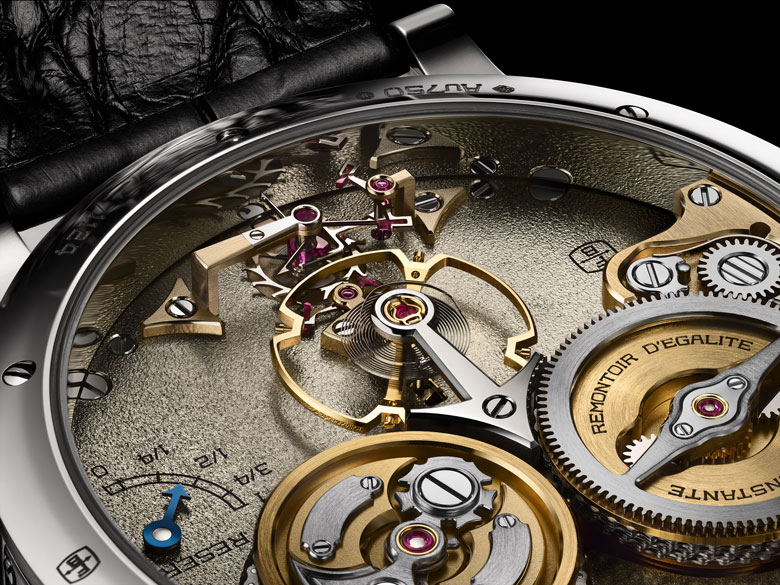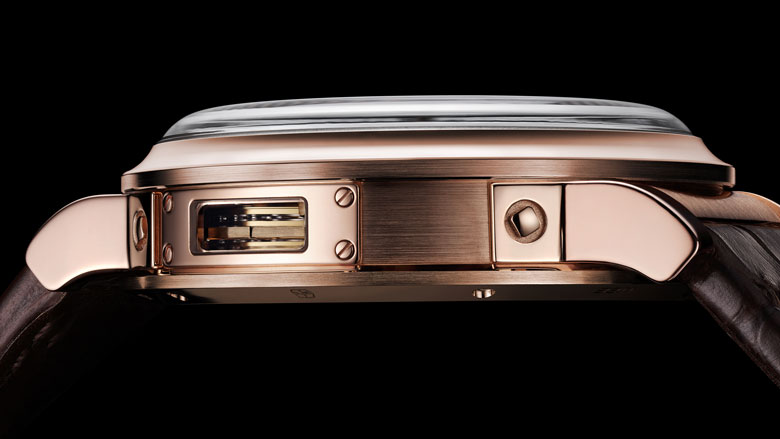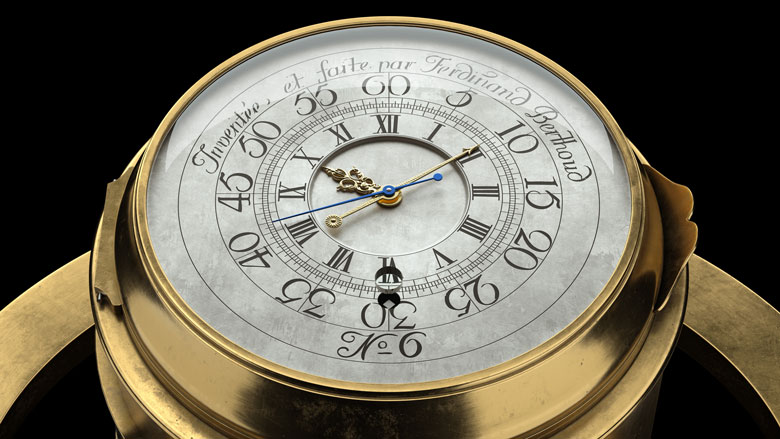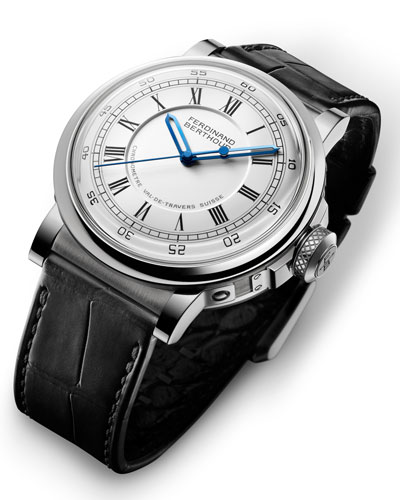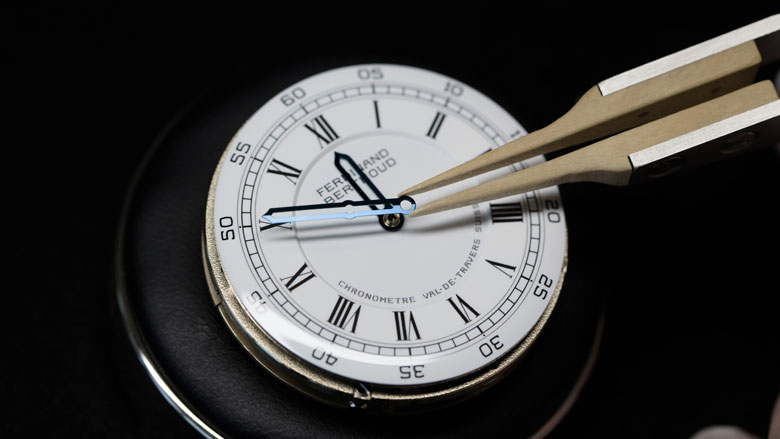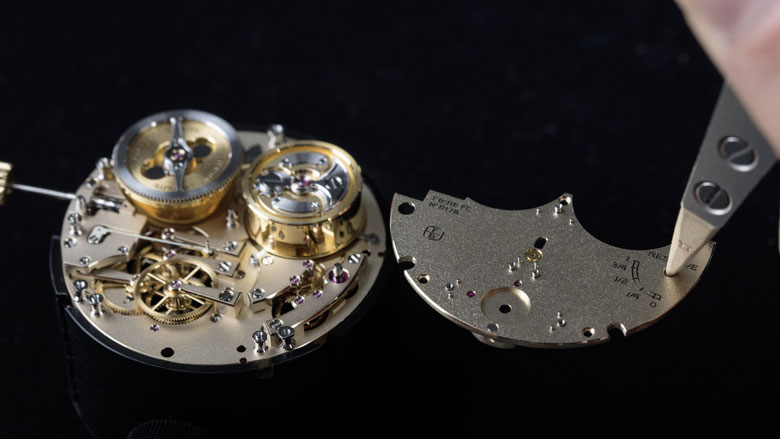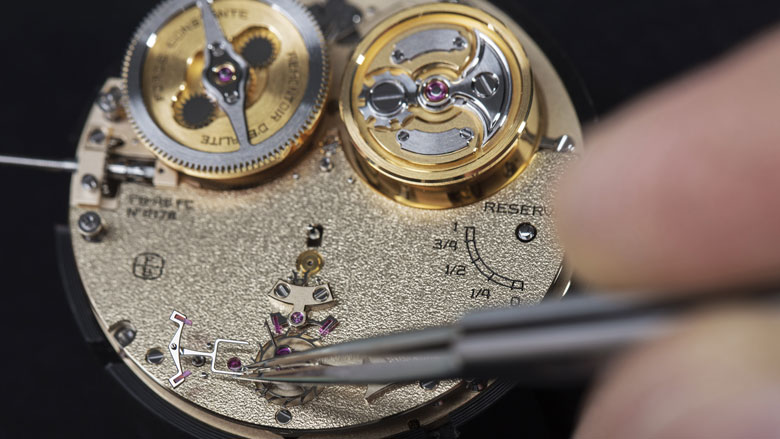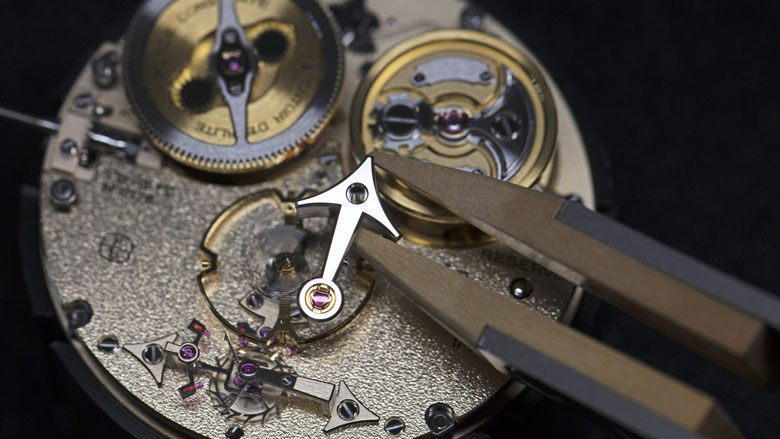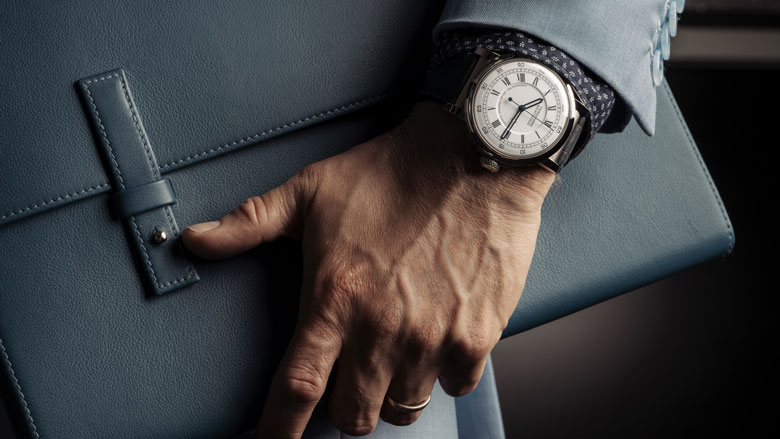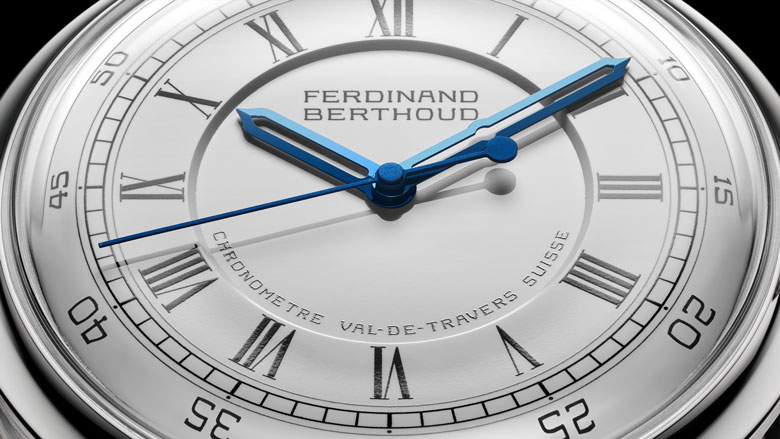
Ferdinand Berthoud Celebrates Five Years with Its Second Caliber
In 1770, Ferdinand Berthoud was awarded the title of “Clockmaker and Mechanic by appointment to the French King and Navy.” Chronométrie Ferdinand Berthoud is celebrating this 250th anniversary by unveiling a new collection inspired by the Marine Clock No.6: the Chronomètre FB 2RE.
This new timepiece reinterprets the architecture and design of this Marine Clock. Fitted along its middle with a large panoramic window, the round 18-karat gold case frames a grand feu enamel dial with a complex two-tiered construction.
Beneath this traditional, uncluttered display lies an exceptional mechanism: the new Chronomètre FB 2RE combines the emblematic fusee-and-chain transmission with a one-second remontoir d’égalité mechanism. A model charting a course towards a new world of mechanical precision entirely in keeping with the lifework of Ferdinand Berthoud.
The early 18th century was marked by the conquest of the oceans. England and France were engaged in an all-out battle to develop a means of calculating longitude during sea voyages: literally a garde-temps or timekeeper. Many renowned watchmakers experimented with new techniques in order to develop a reliable and accurate measuring instrument, whose operation had to withstand the pitching and rolling of ships as well as changes in temperature.
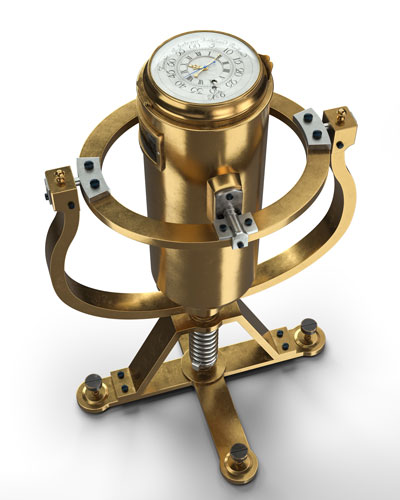
To celebrate the 250th anniversary of this major scientific breakthrough that has left an indelible imprint on history, Chronométrie Ferdinand Berthoud presents a new emblematic collection: the Chronomètre FB 2RE. This model pays tribute to the genius of Ferdinand Berthoud, as revealed in the extraordinary Marine Clock No. 6. Inspired by its architecture and design, it introduces a new movement, a symbol of excellence and chronometric precision: Caliber FB-RE.FC with remontoir d’égalité, often referred to in English watchmaking parlance as a remontoire.
Once again, Chronométrie Ferdinand Berthoud is creating an exceptional contemporary timepiece deeply rooted in Ferdinand Berthoud’s legacy. This new top-of-the-range wrist chronometer benefits from the latest technological advances, while paying tribute to the master watchmaker, a trailblazer in his own era.
As described by Ferdinand Berthoud in his Traité des horloges marines (Treatise on Marine Clocks) published in Paris in 1773, the mechanisms of marine clocks are protected by a cylindrical copper drum, itself held in a horizontal position by a gimbal suspension system that he invented.
The case of the Chronomètre FB 2RE picks up the shape of these marine clocks and this modular construction. The movement is installed in a cylindrical container made of 18-karat gold and water-resistant to 30 meters. Short, tapering all-of-piece lugs are solidly secured to the case by stylized bolts and ensure the Chronomètre FB 2RE smoothly molds the contours of the wrist.
A large panoramic window appears at 10 o’clock along the case middle in a screw-down frame and reveals the movement’s pillar-type architecture, as well as the barrel and its chain. The round case, 44mm in diameter and 14mm thick, is enhanced by a curved bezel fitted with a strongly domed “chevée” glare-proof sapphire crystal. The caseback is also fitted with a sapphire crystal enabling one to admire the incomparable beauty of the movement. The large diameter of the knurled crown makes it easy to grip, thus facilitating movement winding. Integrated into the case middle by an applied screw-in crown guard, it features a dynamometric system that disengages as soon as the barrel is fully armed.
The gold used in the manufacture of FB 2RE chronometers comes from the ethical sourcing system set up by Karl-Friedrich Scheufele – President and founder of Chronométrie Ferdinand Berthoud – at Chopard, of which he is also Co-President.
The Chronomètre Ferdinand Berthoud FB 2RE with remontoir d’égalité is available in two 10-piece limited and numbered editions: one in 18-karat rose gold with a black enamel dial and the other in 18-karat white gold with a white enamel dial.
Traditional Enamel Dial: In order to facilitate reading off the hours and minutes during sea voyages, Ferdinand Berthoud had designed a two-tiered dial with two types of graduations for his Marine Clock No. 6: in the center, the hours indications in Roman numerals stand out from the minutes circle in Arabic numerals appearing on the circumference.
The dial construction of the Chronomètre FB 2RE follows this same principle while adding an additional degree of complexity by opting to craft it in grand feu enamel. This dial is thus composed of two elements: one is domed, located on the periphery and designed to bear the graduated scale; while the second, positioned centrally and slightly lower, is a flat medallion. Both are made of grand feu enamel, which requires numerous firings in a special kiln at a temperature of 800°C. Their base is made of non-magnetic steel, a choice that requires perfect compliance with the required temperatures and extremely precise firing times in order to avoid any distortion, while also preventing the excess thickness resulting from the traditional counter-enamel.
The inscriptions on the dial are also crafted in painted enamel, which requires an additional firing in the kiln. Roman numerals for the hours, Arabic numerals for the minutes and a rail-track minute circle appear alongside the markings and the original inscription “Chronomètre Val-de-Travers Suisse.” The dial of reference FB 2RE.1 is crafted in white enamel with black inscriptions, while the dial of reference FB 2RE.2 features deep-black enamel punctuated by white markings.
Signature Hands: For the hours and minutes, the Chronomètre FB 2RE is equipped with dagger-type hands in 18-karat gold featuring a hollowed-out design reminiscent of the hands of the Chronomètre FB 1, while the shorter hours hand remains flush with the central dial medallion. The minutes hand is highlighted by a bulge half-way along and extends to the base of the minute circle. The extremely thin titanium seconds hand weighs just 0.01 grams. This lightness helps to lighten the burden on the remontoire. Finally, the arrow-shaped CVD-blued 18-karat power-reserve hand on the back of the movement is visible through the wide sapphire crystal caseback.
Bridges and Pillars: The FB-RE.FC caliber is built according to an architecture unique in contemporary watchmaking and specific to Chronométrie Ferdinand Berthoud. Its organs are symmetrically positioned, legible and clear, as if the order reigning in its operation were expressed through the elegance of its visual balance. This mechanical movement with manual winding comprises 26 bridges held by 10 steel pillars, surrounding the mechanical parts.
This construction is characteristic of 18th century Ferdinand Berthoud marine chronometers. This century that proved so important for innovation notably inspired Chronométrie Ferdinand Berthoud to adopt the extremely distinctive design of its bridges. They are composed of a flat, screw-in section extended into a raised, cantilevered neck, giving them a staircase shape typical of the horological constructions of that era.
A New Approach: The FB-RE.FC caliber is one of the rare examples to feature fusee-and-chain transmission, serving to ensure constant force for the escapement. It acts like an infinitely variable automatic reduction gearbox.
The torque delivered by the barrel of a watch movement naturally varies according to the degree of winding. In this type of transmission, when the movement is fully wound, the chain is completely wrapped around the small end of the spindle-shaped fusee and the mainspring is at maximum power. This force dwindles in the course of time, as the chain coils around the drum, moving from the small to the large end of the fusee.
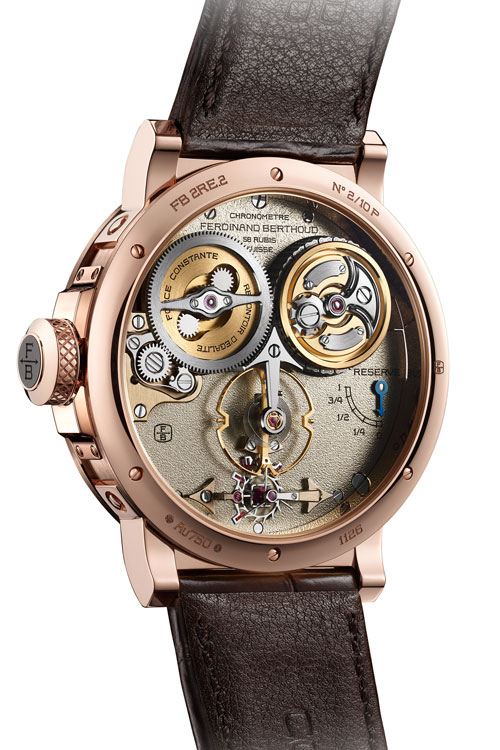
Remontoir d’égalité: Exceptionally, the FB-RE.FC caliber, in addition to the constant-force mechanism, is equipped with a one-second remontoire visible on the back of the movement. It is one of the most complex torque regulation systems in the history of time measurement.
Far from duplicating the role of the fusee, this device complements its action by acting on another point. The fusee equalizes the torque reaching the gear train, yet irregularities are created when the teeth mesh. These torque variations, of a much smaller magnitude than those generated by the uncoiling of the mainspring, are nevertheless important in light of the precision demanded by Chronométrie Ferdinand Berthoud.
Deadbeat Seconds: The Chronomètre FB 2RE remontoire is of a distinctive type in that it is fitted concentrically with the escape-wheel and thus directly connected to the escapement. This device is designed to store a small amount of energy in a secondary hairspring, playing a driving rather than a regulating role. It delivers its force to the balance via the escapement at such short intervals that the variation of the force in the hairspring is not taken into account. In this case, Chronométrie Ferdinand Berthoud has opted for a one-second release.
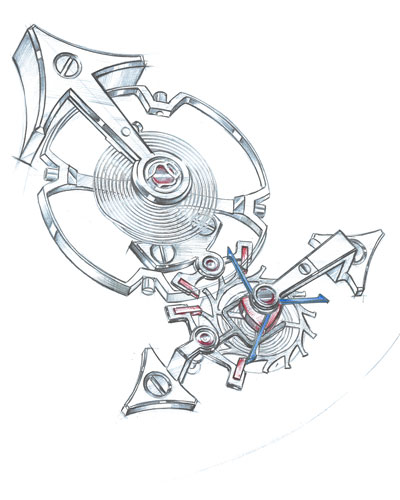
The escape-wheel pinion is connected to the stop wheel and marks off the seconds. The entire assembly is connected to the central seconds hand and enables the Chronomètre FB 2RE to display true seconds, or deadbeat seconds, like marine chronometers or regulator-type longcase clocks. To enhance the accuracy of the display, the connection between the escapement pinion and the deadbeat seconds hand is achieved by means of a special deadbeat seconds mechanism.
Lighter System: The remontoire is traditionally very energy-intensive, particularly because of the friction it generates. Chronométrie Ferdinand Berthoud has reduced this friction by installing the remontoire where the torque is lowest. The escape wheel is the one that receives the least force from the entire gearing and is therefore the best candidate for the position. In addition, the use of the ruby cam and an extremely light seconds hand (0.01 grams), thanks to the use of titanium and an extremely tapered shape, reduces the weight driven by the remontoire.
All these decisions together enable the FB-RE.FC caliber to offer a power reserve of 50 hours. This is indicated on the back of the movement by means of a blued arrow-shaped hand placed on a sector engraved on the mainplate. The barrel stores energy for several more hours, but the stopwork system blocks it outside the guaranteed precision timekeeping (chronometry) range.
Optimizing Precision: Historically, high-precision timepieces have been based on work to optimize the regulating organ, and Ferdinand Berthoud also made interesting modifications to his chronometers throughout his career.
Chronométrie Ferdinand Berthoud has followed in his footsteps by inventing a new two-spoke variable-inertia balance with an aerodynamic shape and four inertia blocks. Its large diameter guarantees its inertia and stability, with a low frequency of 18,000 vibrations per hour, thereby safeguarding the power reserve. It also enables slow oscillation, pleasing to the eye and similar to that of historical timepieces.
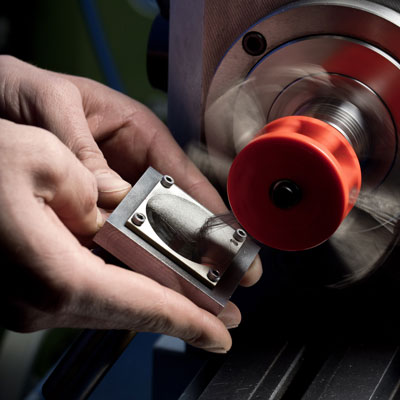
Excellent Finishing: Because the excellence of the movement equals the sum of the care devoted to its beauty, the finishing of the FB-RE.FC caliber is exceptional. The nickel silver bridges reveal a frosting-type finish, involving extremely fine manual graining using a brush, performed before the final drilling and milling stages. This ancient technique endows the components with peerless brilliance. However, since nickel silver is an extremely fragile alloy, any error or scratch during the frosting process is irretrievable and implies discarding the part in question.
The arrow-shaped steel balance bridge is mirror polished, as is the upper part of the stepped escape-wheel bridge. The barrel and the fusee are satin-brushed, as are all 790 components of the chain. Finally, all the movement parts are hand-chamfered and beveled with traditional tools by the artisans of Chronométrie Ferdinand Berthoud. The quality control of these finishes is carried out under a much-higher degree of magnification than is customary in watchmaking, using a 6.7x magnifying glass. At such a level, no detail, however tiny, can go unnoticed. Therein lies the excellence cherished by Chronométrie Ferdinand Berthoud. This respect for watchmaking tradition, expressed with unmistakable modernity in the Chronomètre FB 2RE, will always remain at the very core of all future developments from the maison.

